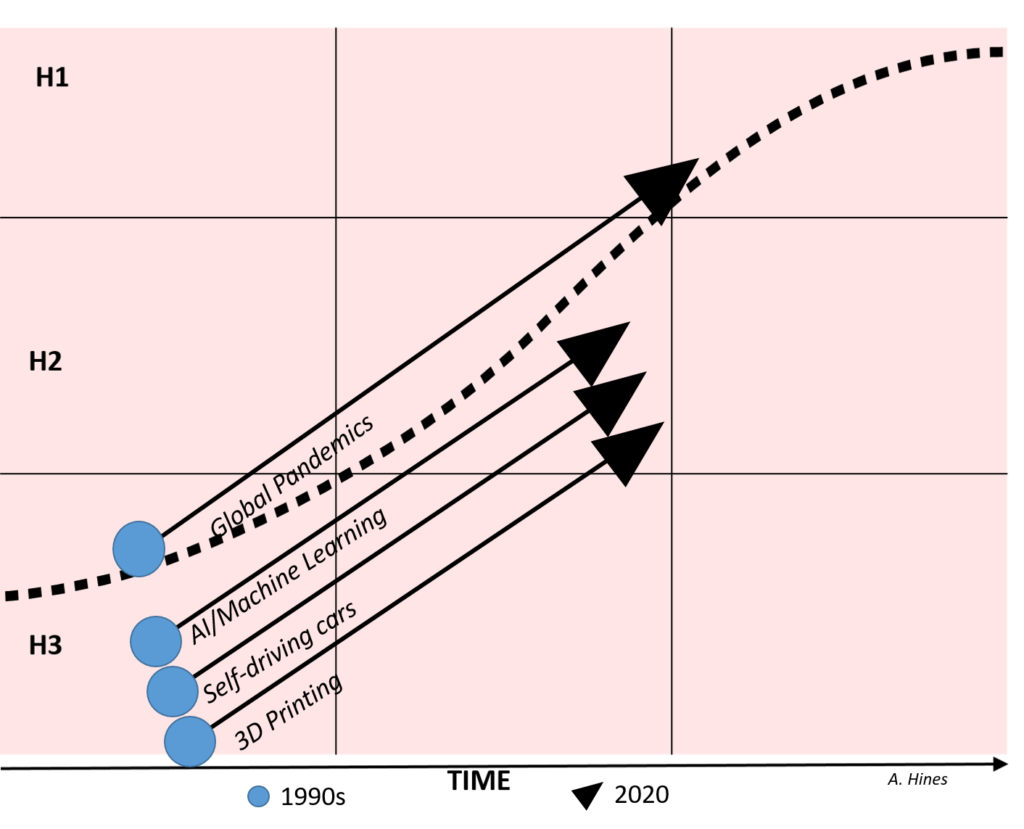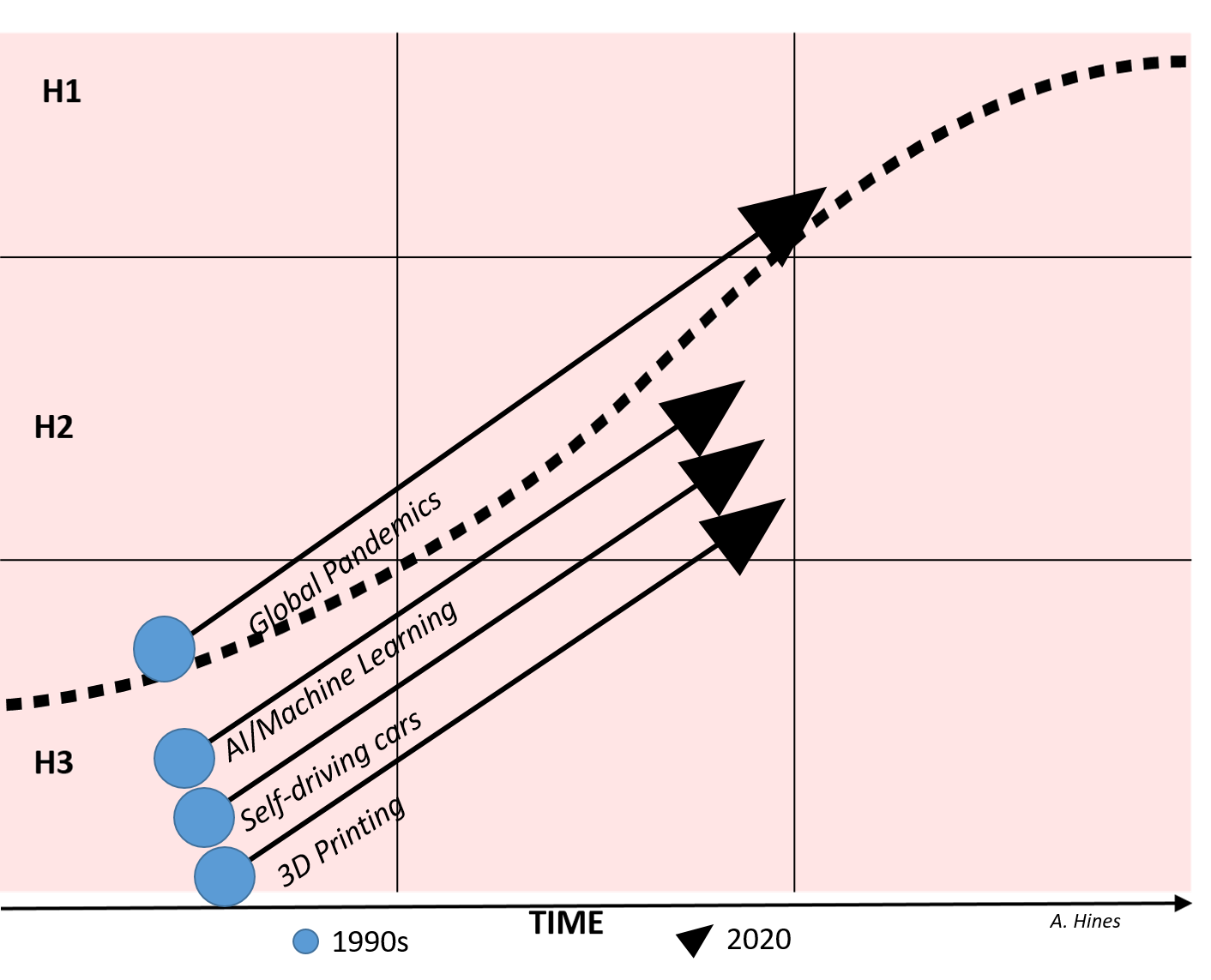We are constantly being urged to speed up. Change is happening so fast! The speed of change is accelerating! Change is exponential. Or my fave, “fast is the new fast.” The concept of VUCA (volatile, uncertain, complex, ambiguous) is often invoked to support this need to get faster. It’s good that change and uncertainty are being acknowledged. This is certainly prefera ble to a head-in-the-sand view that everything is okay, or worse the view that someday things are going to go back to normal, or worse still that we’ll be able to go back to the good ole days (we ain’t).
ble to a head-in-the-sand view that everything is okay, or worse the view that someday things are going to go back to normal, or worse still that we’ll be able to go back to the good ole days (we ain’t).
But is change really happening at blazing speed? Only if you’re not looking! Change looks to be happening really fast when we’re not doing our foresight homework. When we do our foresight homework, the sudden disruptions, surprises, bolts out the blue, came out of nowhere stuff goes away, in the sense that we’ve already seen it coming. Let’s take a few examples of “Who could have seen that rapid change coming?”
- Self-driving vehicles: I visited a major automobile manufacturer in the early 1990s to participate in a project on Intelligent Vehicle Highway Systems, aka self-driving cars.
- 3D printing: I wrote a report in the mid-1990s on the future of Desktop Manufacturing, aka 3D printing
- AI/machine learning: I lost track of how many times we wrote about this in the 1990s
- Global pandemics: We wrote about global pandemics in our 2025 book published in 1996
The common denominator here is that if we had been doing our horizon scanning, we would have seen all four of the above coming at least thirty years ago!!! Today’s surprises come to most people’s attention when they are in Horizon 1 or Horizon 2. It typically takes a long, long time for a new development in Horizon 3 to make the journey to H2 and then to H1. And many H3 ideas never do make it. One thing we futurists can practically guarantee is that if you commit to foresight and do your horizon scanning, you will feel more confident about your future, because you know that you will not be surprised. So, do your homework, and take your time in navigating the future. — Andy Hines

Your post reminded me about a recent article I read that explored the need for infrastructure before an invention takes off. Among the examples were the 40-45 years that elpased between the invention of the gasoline-powered automobile engine and when sales finally took off.
Essentially, you are not going to buy a car until you have a smooth road, preumatic tires, gas stations, and maybe windshields. Same goe for electric lights and telephones.
definitely a key part of it…and a “missing piece” can keep an innovation/change from taking off for a long time.